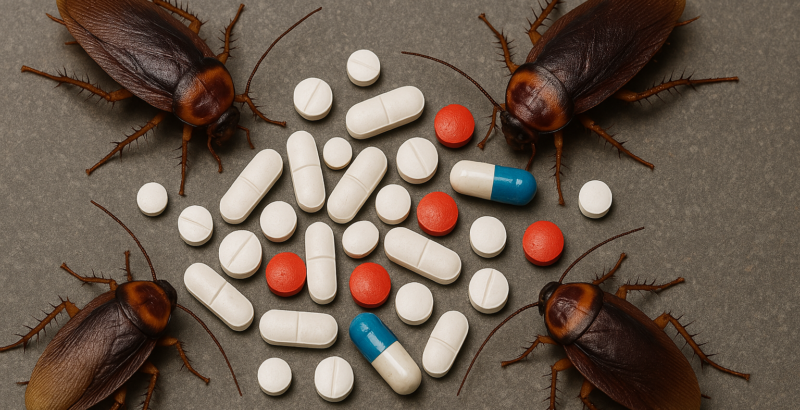Pest control might seem straightforward: find the pest, eliminate the pest, and prevent the pest from coming back. But the reality is far weirder—and far more fascinating. What if we told you that some pests act like addicts, others build web disasters under the influence of coffee, and some are oddly comfortable living in your medicine cabinet?
Welcome to the wild, often hilarious, and genuinely important world of how substances affect pest behavior. Understanding these strange interactions isn’t just about curious science—it helps us protect your businesses more effectively every day.
Let’s start with the spiders, those web-spinning masters of engineering. When exposed to substances like caffeine, LSD, and marijuana, they lose their architectural prowess. In one NASA study, caffeinated spiders built wild, erratic webs that looked like they’d pulled an all-nighter on energy drinks. The webs were incomplete, tangled messes—proof that even a little exposure can throw insect behavior completely off course.

Credit: NASA
This might seem like a novelty, but it highlights a real issue: the presence of everyday substances in our environments can alter how pests behave. It’s something we take seriously when investigating pest activity in places like kitchens, labs, and manufacturing facilities.
Now, onto cockroaches. These guys are notorious survivors, but who knew they could also develop a taste for stimulants? Studies have shown that cockroaches exposed to drugs like cocaine and Adderall began displaying drug-seeking behaviors. In real-world terms, that means cockroaches might be attracted to trace residues of medications—posing an unexpected challenge in homes, businesses, or healthcare environments.
Speaking of pharmaceuticals, allow us to introduce the drugstore beetle (Stegobium paniceum). True to its name, this beetle doesn’t just raid your pantry—it’s been found nibbling on pills, herbal supplements, and even veterinary meds. While most bugs would be wiped out by exposure to pharmaceuticals, the drugstore beetle thrives. That’s bad news for hospitals and pharmacies, but great motivation for our pest professionals to stay vigilant.
It’s not just the creepy crawlies. Birds and rodents also get in on the action—especially when alcohol is involved. Ever heard of drunk birds crashing into windows or stumbling around like they’ve had one too many? That’s because fermented fruits can lead to real intoxication. And rats? They’ve been observed seeking out alcohol-rich food scraps in the wild. For pest control pros, this kind of behavior becomes a concern in places like breweries, wineries, and composting facilities.
Even the humble fruit fly has a story to tell. These tiny pests have become important players in neuroscience research because their brains react to addictive substances in ways that mimic humans. That makes them surprisingly useful in addiction studies—and incredibly helpful in designing better, more attractive baiting strategies for pest control.
And not all bugs are the villains in these tales. Some actually contribute to modern medicine. Blister beetles, for example, produce cantharidin—a compound being studied for its cancer-fighting potential. Tick saliva contains proteins that may help fight inflammation in humans. It’s a strange but powerful reminder that arthropods aren’t just nuisances—they’re also part of the solution.
Ultimately, the strange relationships between insects, animals, and substances open a broader understanding of how pests behave—and how we can respond. From scientific discovery to real-world pest management, the tiniest creatures often hold the biggest surprises. And the more we learn about them, the more effectively we can live alongside (or ahead of) them.
Stay curious—the world of pests is full of surprises.

